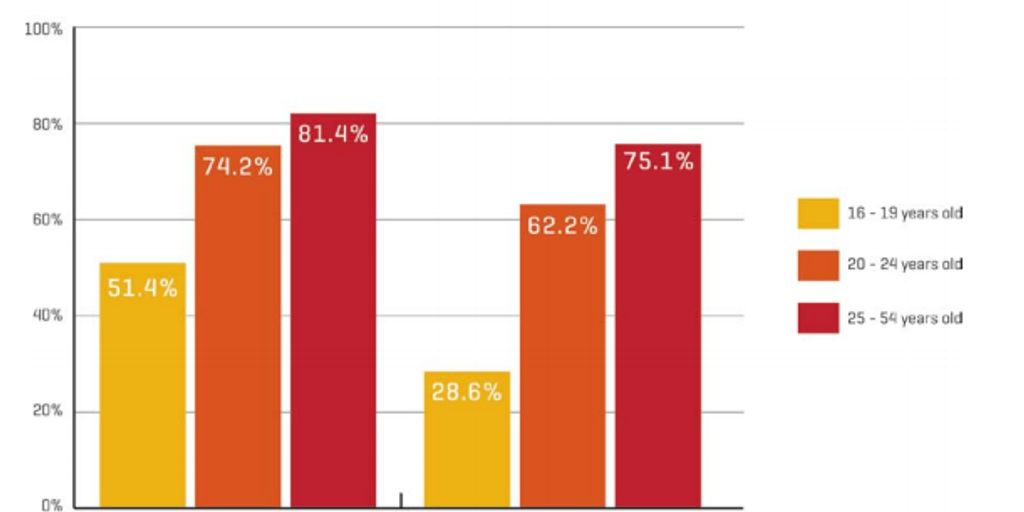
In today’s fast-paced world, achieving a harmonious balance between professional responsibilities and personal life is more crucial than ever. The quest for work-life balance is a universal challenge, affecting individuals across various professions and life stages. This article delves into actionable tips and strategies to help you master work-life balance, enhancing your productivity, well-being, and overall happiness.
Key Takeaways
- Achieving work-life balance requires consistent effort, reflection, and willingness to make changes.
- Setting boundaries between work and personal life is essential for maintaining balance and reducing stress.
- Prioritizing self-care and well-being is crucial for both mental and physical health.
- Effective time management techniques can help you balance professional and personal responsibilities.
- Flexible work arrangements can provide significant benefits for achieving a harmonious work-life balance.
Understanding the Concept of Work-Life Balance

Defining Work-Life Balance
Work-life balance refers to the level of prioritization between personal and professional activities in an individual’s life and the level to which these activities are integrated. Achieving a healthy balance between work and personal life is essential for overall well-being. It means managing personal and professional responsibilities to ensure neither is neglected.
The Evolution of Work-Life Balance
The traditional concept of work-life balance often paints a picture of a scale, perfectly balanced with work on one side and personal life on the other. But is this attainable? Or is it just setting us up for continuous struggles as we attempt to maintain an unrealistic equilibrium? The truth is, this outdated model often leads to a poor work-life balance, with work intruding into our time, blurring boundaries, and causing stress.
Common Misconceptions
One common misconception is that work-life balance means spending equal time on work and personal activities. In reality, it’s about prioritizing and managing these responsibilities to ensure well-being. Another misconception is that achieving work-life balance is a one-time task, but it requires continuous effort and adjustment.
In the whirlwind of modern life, balancing our professional ambitions with personal well-being has become more crucial than ever. Achieving a harmonious equilibrium between work and life not only enhances our overall happiness but also maximizes productivity and fosters long-term success.
Setting Boundaries Between Work and Personal Life

Establishing boundaries serves as a potent strategy to maintain a healthy life-work balance. It’s about clearly defining when we are ‘on’ and ‘off’ work. This can be as simple as setting specific work hours and making it a point to disconnect from work-related activities outside of these hours.
The Importance of Boundaries
The boundaries between work and personal life will blur. That’s a fact. So, it’s important to remember that individuals perceive and manage their professional and personal lives differently, and embracing flexibility is critical as workers seek to optimize productivity, creativity, and overall well-being.
Practical Tips for Setting Boundaries
- Designate specific times for work and personal activities, ensuring a clear boundary between the two.
- If you don’t already have a remote or hybrid working environment, you may initiate a conversation with your manager about implementing flexible work arrangements that suit both your needs and the company’s objectives.
- Define clear boundaries by setting designated workspaces and times, minimizing distractions during focused work hours, and disconnecting from work-related communication outside of designated times.
Communicating Boundaries Effectively
A key aspect of achieving a harmonious work-life balance is learning to set boundaries, especially outside of working hours. An imbalance between personal and professional lives can lead to burnout and stress, ultimately impacting productivity.
Encourage open communication with your employer and colleagues about your boundaries. This can help in setting realistic expectations and fostering a supportive work environment.
Prioritizing Self-Care and Well-Being

The Role of Self-Care in Work-Life Balance
Prioritizing self-care stands as another essential strategy to achieve a life-work balance. In the race to meet professional commitments, we often neglect our physical and mental health. However, by prioritizing self-care, we can reconnect with ourselves, be more in tune with our emotions, and improve our overall well-being.
Incorporating Self-Care into Daily Routine
It’s easy to neglect self-care amidst the demands of work. Allocate time for activities that rejuvenate your mind and body, such as exercise (walking is a great start), meditation/yoga, or hobbies (reading or needlework are good examples). Set aside at least 30 minutes each day, even if you have to break the time up into smaller time blocks, for self-care practices to recharge and maintain peak performance. Stick to this self-care routine as a commitment to your well-being.
Mental Health and Work-Life Balance
Life-work balance extends beyond mere time management, prioritizing personal fulfillment, mental and emotional health, as well as overall well-being over the demands of work. Prioritizing personal fulfillment, such as spending quality time with loved ones or pursuing personal interests, can significantly reduce stress, prevent burnout, and safeguard our mental and emotional health.
Self-care is not selfish; it’s essential. Dedicate time each day for activities that rejuvenate you, be it reading, exercising, meditating, or pursuing a hobby. This “me time” is crucial for mental health and can significantly improve your productivity and satisfaction in both work and personal life.
Effective Time Management Strategies

Mastering effective time management is the key to juggling multiple roles. It allows us to prioritize tasks, plan our schedules, meet deadlines, and reduce stress, enabling us to excel in both personal and professional responsibilities. The psychological benefits of balancing multiple roles include improved boundary-setting skills, enhanced negotiating skills, increased life satisfaction, and a boost in self-esteem and self-acceptance.
Time Management Techniques
Efficient time management is a cornerstone of work-life balance. Utilize productivity tools and techniques to prioritize tasks, set realistic goals, and allocate time effectively.
Here are time management techniques:
- Timeboxing – Allocate specific blocks of time to different tasks.
- The Pomodoro Technique – Work in 25-minute intervals with short breaks in between.
- The Eisenhower Matrix – Prioritize tasks based on urgency and importance.
Tools for Better Time Management
To promote effective time management:
- Encourage regular breaks and set deadlines.
- Use time-tracking software to help people create schedules they can stick to.
- Identify major time-wasting tasks and provide tools or resources so people can manage projects effectively.
- Onboard a project management software to help people better plan and improve their overall productivity.
Balancing Work and Personal Time
For achieving a life-work balance, effective time management is of paramount importance. It’s about making the best use of our time to ensure that we can fulfill our professional obligations without compromising on our commitments. By setting goals, planning, and using productivity hacks, we can maximize our efficiency and create a more balanced and fulfilling life.
Efficient time management is a cornerstone of work-life balance. Utilize productivity tools and techniques to prioritize tasks, set realistic goals, and allocate time effectively.
Leveraging Flexible Work Arrangements

Flexible work arrangements can have a profound impact on an employee’s ability to achieve a healthy life-work balance. By offering options such as remote work, flexible hours, or compressed work weeks, employers can accommodate the diverse needs and preferences of their employees.
Building a Supportive Work Environment

Employers have a significant role to play in cultivating a culture that supports and encourages life-work balance. By offering flexible work arrangements, promoting mental health and wellness, and leading by example, employers can create a supportive environment that enables employees to thrive both personally and professionally.
Providing employees with the flexibility and resources to manage their work and personal responsibilities can significantly enhance their well-being and productivity. Moreover, when managers lead by example in demonstrating a commitment to life-work balance, it sends a strong message to the employees that their well-being is valued, thereby fostering a positive work culture that genuinely supports balance.
Be focused on having a healthy work environment where employees can feel connected to each other as well as their leaders.
In today’s hectic work atmosphere, paying attention to mental health needs is imperative. Place a key focus on initiatives that promote positive mental health among your workforce by providing programs like mindfulness training and stress management sessions. These can help reduce tension, improve overall well-being on and off the job, and create a positive working environment.
Tips to help support parents:
- Create family-friendly company events to foster community spirit.
- Schedule meetings during school hours when possible.
- Show understanding towards unexpected emergencies related to kids.
- Offer childcare benefits or subsidies to help ease the burden of childcare costs.
Adapting to Changing Work-Life Dynamics

Impact of Technology on Work-Life Balance
Technology has significantly transformed the way we work, offering both opportunities and challenges. For many, remote work symbolizes liberation from the confines of traditional corporate culture, offering a pathway to a more balanced and fulfilling life. However, the constant connectivity can blur the lines between work and personal time, making it essential to set clear boundaries.
Navigating Remote and Hybrid Work
Remote and hybrid work models have become increasingly popular, providing flexibility and autonomy. To thrive in these environments, it’s crucial to establish a dedicated workspace, maintain a consistent routine, and leverage digital tools for effective communication and collaboration. Adapting to change in a dynamic job market requires a proactive approach, continuous learning, and a growth mindset.
Future Trends in Work-Life Balance
As work-life dynamics continue to evolve, several trends are emerging. These include the rise of flexible work arrangements, the growing importance of mental health, and the integration of advanced technologies to support work-life balance. Embracing these trends can help individuals achieve a more harmonious and fulfilling life.
The key is to embrace flexibility, adjust our schedules and expectations, and develop strong adaptability skills. By doing so, we can effectively manage our stress levels, maintain equilibrium between our personal and professional responsibilities, and achieve a harmonious life-work balance.
Conclusion
Achieving work-life balance is an ongoing journey, not a destination. By implementing the strategies and tips discussed in this article, you are taking significant steps towards a more balanced and fulfilling life. Remember, balance is personal and subjective; what works for one person may not work for another. The key is to find what best suits your lifestyle and professional ambitions, allowing you to thrive in all areas of your life. Embrace flexibility, set boundaries, and prioritize self-care to navigate the dynamic landscape of modern work and personal life. With consistent effort and reflection, you can master the art of work-life balance and enjoy the rewards of improved mental health, increased productivity, and a deeper sense of fulfillment.
Frequently Asked Questions
What is work-life balance?
Work-life balance refers to the equilibrium between professional responsibilities and personal life. It involves managing work demands alongside personal activities to maintain overall well-being.
How has the concept of work-life balance evolved?
The concept has evolved from a rigid separation of work and personal life to more fluid models like work-life harmony, work-life synergy, and work-life integration, reflecting the changing nature of work and personal responsibilities.
Why are boundaries important in achieving work-life balance?
Boundaries help to clearly delineate work time from personal time, preventing burnout and ensuring time for self-care, family, and other personal activities.
What are some effective time management techniques for work-life balance?
Effective techniques include prioritizing tasks, using tools like calendars and to-do lists, and allocating specific time blocks for work and personal activities to ensure a balanced schedule.
How can flexible work arrangements benefit work-life balance?
Flexible work arrangements, such as remote work, flexible hours, and compressed workweeks, allow individuals to better manage their time and responsibilities, leading to improved job satisfaction and personal well-being.
What role do employers play in supporting work-life balance?
Employers can support work-life balance by fostering a supportive workplace culture, offering flexible work options, and providing resources and programs that promote employee well-being.


